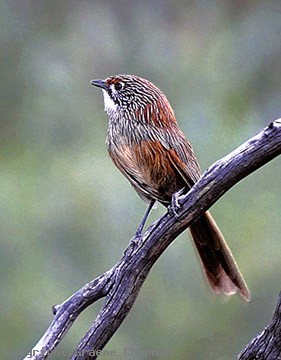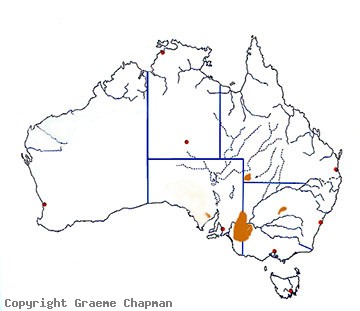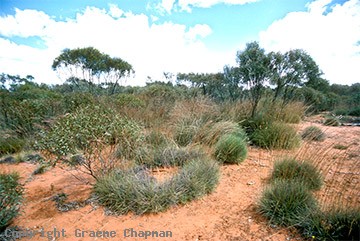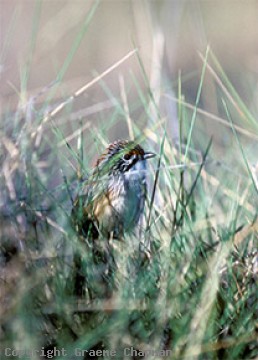
Striated Grasswrens occur in several isolated populations in the arid zones of south-eastern Australia and always in areas of hummock grassland (Triodia) commonly known as spinifex. Recently the form "whitei", once known as Rufous Grasswren, which occurs on the rich red ironstones of W.A.'s Pilbara district, and the subpecies "rowleyi" from central Queensland have been reclassified as full species (see under Rowley's Grasswren and Rufous Grasswren). In addition to this, the form that is largely restricted to desert sand dunes of central Australia has been named Amytornis oweni (see under Sandhill Grasswren). I don't have pictures or sound of this new species yet (watch this space!!).
Across their range they vary a lot in colour, depending on the colour of the ground where they live, a result of natural selection. They have rich and varied songs (listen on sound page), often the only clue to their presence for they are adept at hiding in spinifex (see 513212). They also bound between the hummocks at great speed, rarely allowing a close approach.
The isolated population SW of Cobar in NSW is now quite rare and in danger of disappearing because of the degradation of the mallee habitat there caused by goat farming. Another isolated population from near Santos Station in far southwestern Queensland may have already disappeared - there are no known observations since the collection of the original specimens in 1971. On northern Eyre Peninsula they are now very rare and localised as well.
Known haunts include: VIC: Hattah and Pink Lakes Nat.Parks ...... S.A.: Gluepot Reserve near Waikerie ......... and NSW: mallee country about 100 km SW of Cobar, where they are endangered because of goat farming; and in the Scotia country on the NSW/S.A. border.
In recent times, Striated Grasswrens have virtually disappeared from once well-known haunts in parts of Victoria and S.A. Such a reduction in numbers is likely to be related to food supply. The gradual disappearance of insects is now well-documented but the primary causes not so: possible causes are the emergence of massive monocultures and use of insecticides, climate change and prolonged drought.




